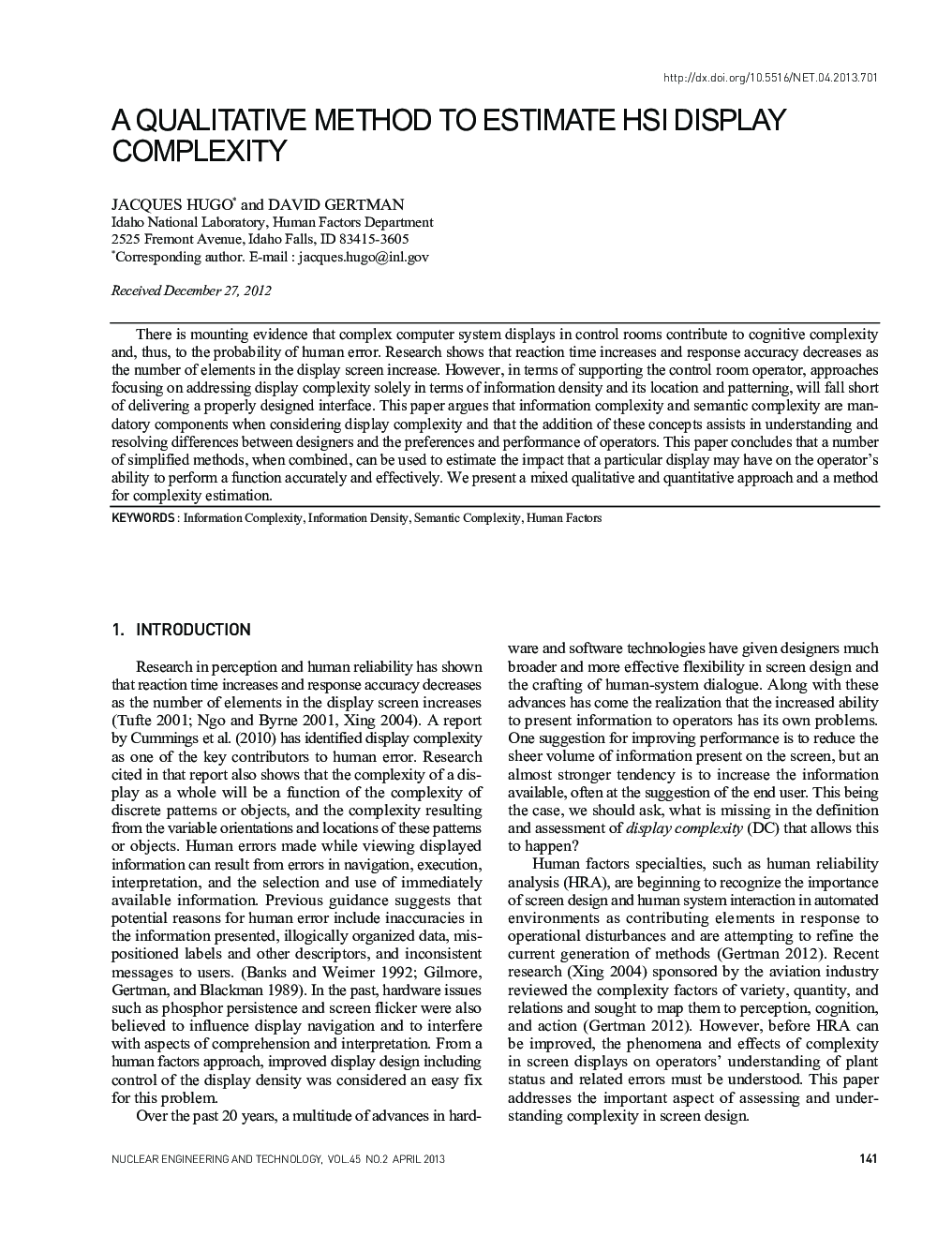| Article ID | Journal | Published Year | Pages | File Type |
|---|---|---|---|---|
| 1739979 | Nuclear Engineering and Technology | 2013 | 10 Pages |
There is mounting evidence that complex computer system displays in control rooms contribute to cognitive complexity and, thus, to the probability of human error. Research shows that reaction time increases and response accuracy decreases as the number of elements in the display screen increase. However, in terms of supporting the control room operator, approaches focusing on addressing display complexity solely in terms of information density and its location and patterning, will fall short of delivering a properly designed interface. This paper argues that information complexity and semantic complexity are mandatory components when considering display complexity and that the addition of these concepts assists in understanding and resolving differences between designers and the preferences and performance of operators. This paper concludes that a number of simplified methods, when combined, can be used to estimate the impact that a particular display may have on the operator's ability to perform a function accurately and effectively. We present a mixed qualitative and quantitative approach and a method for complexity estimation.
